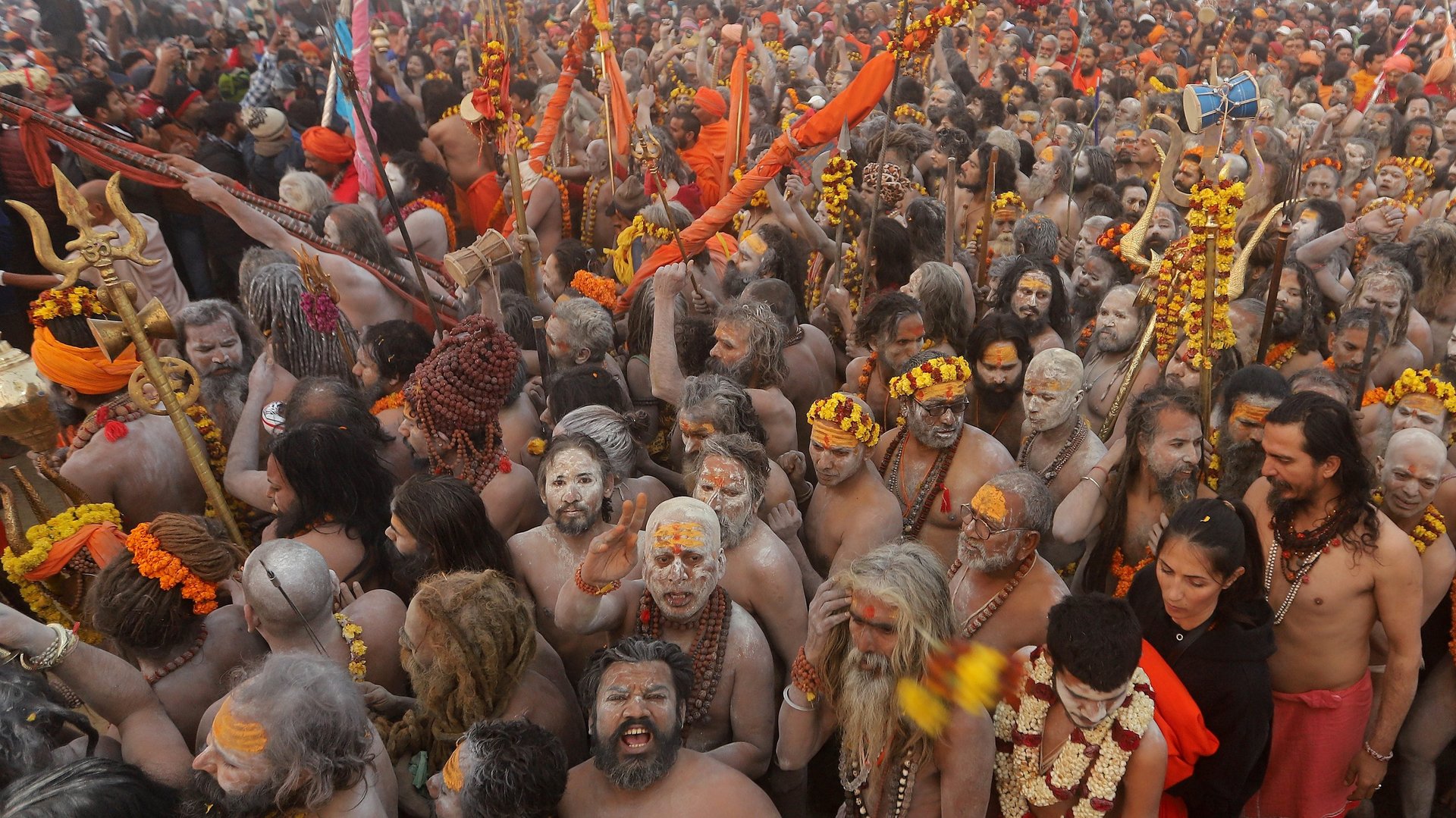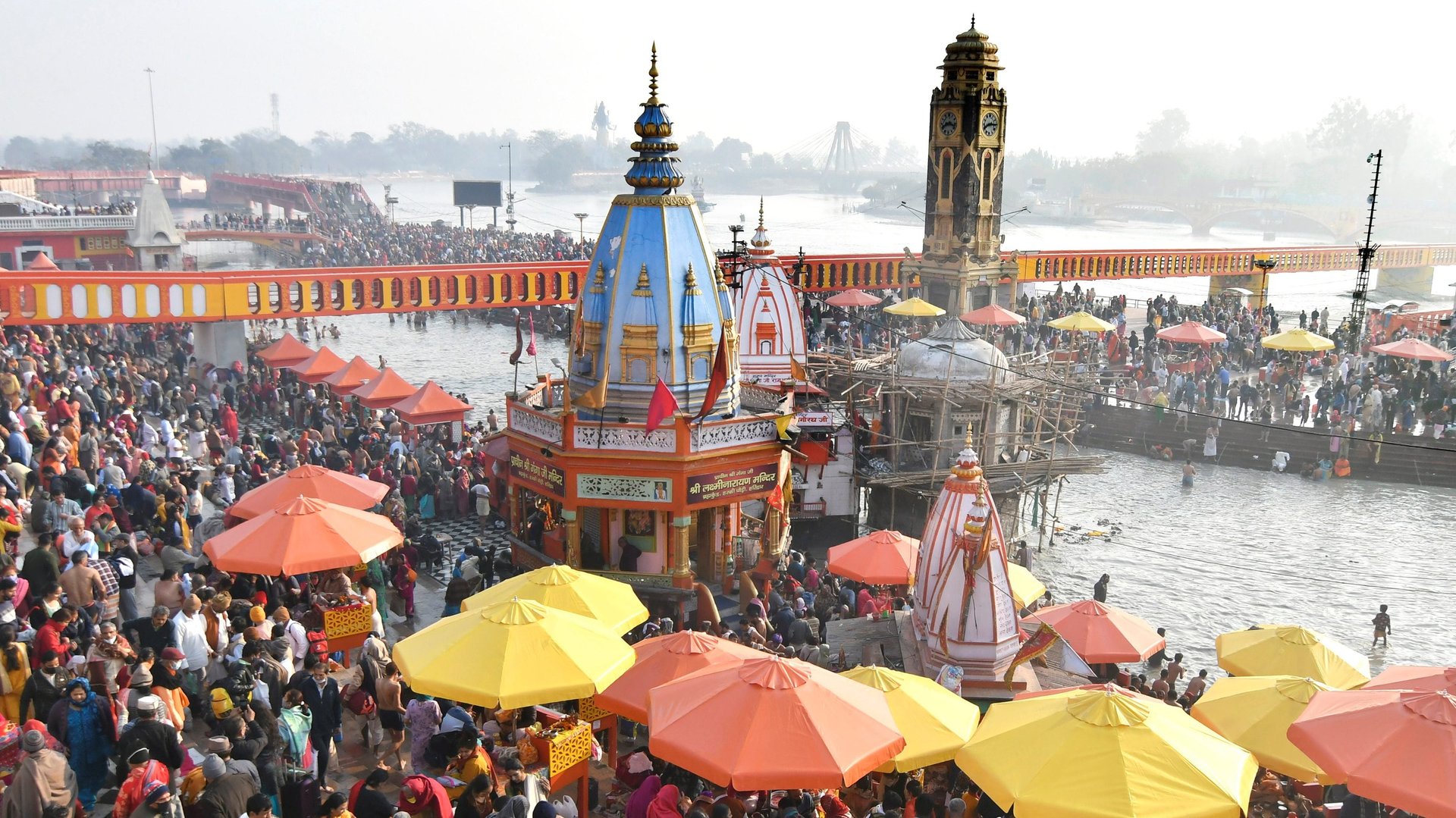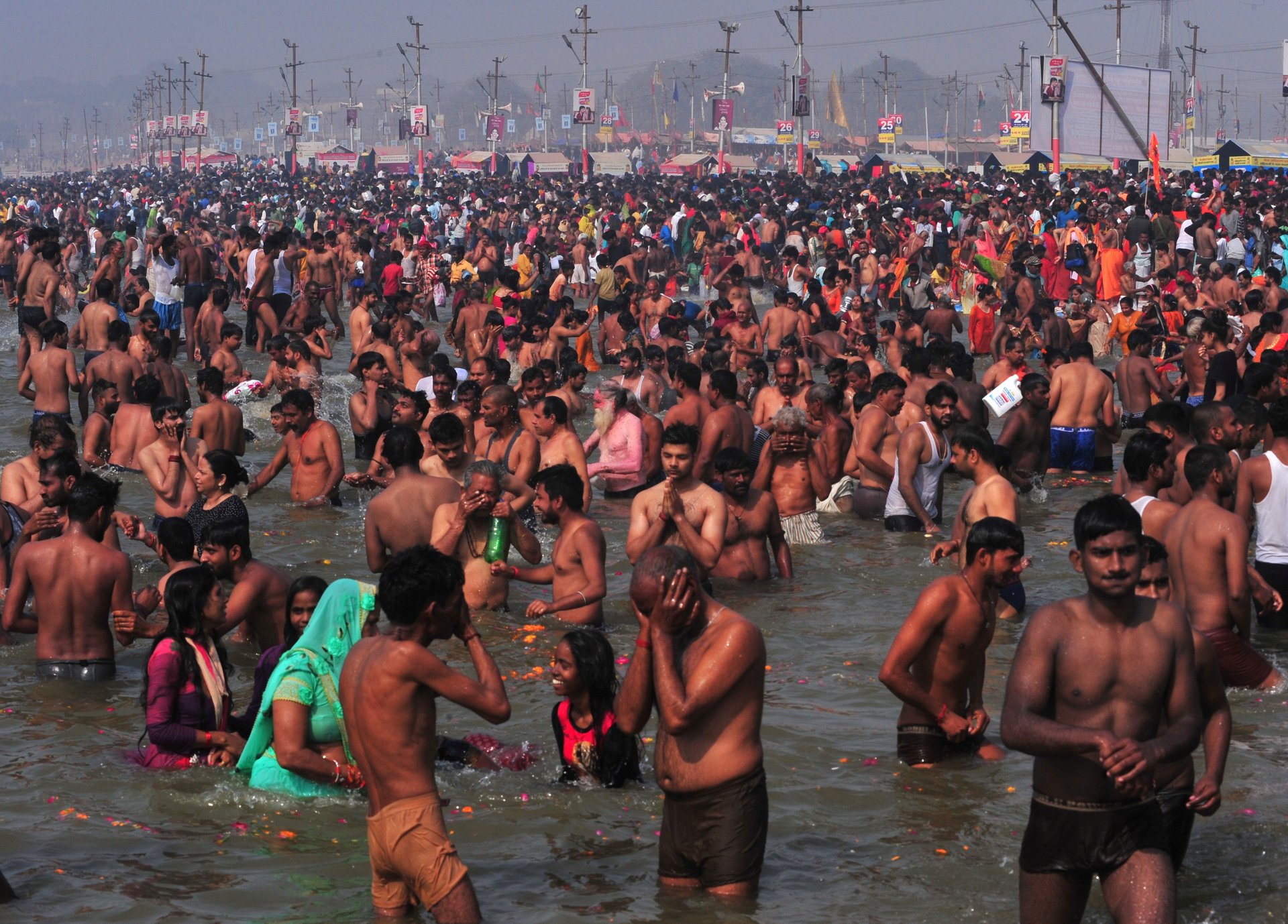Even a once-in-a-century pandemic can’t stop the world’s largest Hindu gathering
A once-in-a-century pandemic will likely play spoilsport at a once-in-12-years Hindu event in India.


A once-in-a-century pandemic will likely play spoilsport at a once-in-12-years Hindu event in India.
The Maha Kumbh, a religious congregation of Hindu seers and devotees, will be held in the northern Indian city of Haridwar between April 1 and 30. But the event, which is observed once every 12 years at each of India’s four river-bank pilgrimage sites, will be significantly pared down because of the Covid-19 pandemic.
Unlike a free-for-all mela or fair, the Maha Kumbh this year would need specific passes, Covid-19-negative tests, and constant masking. The event will also be much shorter than usual, which means small businesses that thrive during these events, including the local tourism industry, would be looking at far fewer economic opportunities.
Neither the Hindu seers (or sadhus), nor the businesses are happy about the state of Uttarakhand’s decision to host a no-frills Kumbh, especially one that restricts both pilgrim interaction and grandeur. The government’s standard operating protocols (SOPs) for the event are being seen as particularly restrictive.
“…Reducing fair duration from 120 days to 30 days, the obligation of a Covid test report, ban on cultural and religious events, elders and children, not running special trains and buses during the period of the fair—all this will affect the businesses dependent on the pilgrims, and the religious sentiments of people who believe in the Kumbh. Governance and fair administration should make proper arrangements for organising this Maha Kumbh and not stop the faith,” Kamal Brijwasi, president of the city’s traders’ association, told India Today.

While the SOPs may have irked those invested in the Kumbh, these are still rules that are necessary—and yet practically impossible to implement given the very nature of the festival.
What is the Maha Kumbh Mela?
The Maha Kumbh is traditionally held between the Hindu festivals of Makar Sankranti and an auspicious full moon in April. Followers of the Hindu religion visit the site of the Kumbh Mela with families, often staying in makeshift camps for weeks on end. For context, the ardh (or half) Kumbh Mela in Prayagraj in 2019 saw 240 million visitors, including a large number of foreign tourists.
Hindu ascetics, who identify with certain sects or akharas, set up large camps where they read religious scriptures, and sing hymns praising Hindu gods. Most evenings, devotees and sadhus gather around for a communal meal.
These akharas also wield significant political influence, often aligning with right-wing and Hindu nationalist parties such as the Bharatiya Janata Party. The Nirmohi Akhara, for instance, was a vocal proponent of the Ram Janmabhoomi movement, which called for the building of a temple dedicated to Hindu god Ram at his supposed birthplace in Ayodhya.
Every Kumbh, the sadhus and their followers take a dip in the river on whose bank that fair is being held to symbolically wash away their sins. This is called the shahi snan (or the royal dip), and marks the most auspicious—and the most crowded—days of the fair. Some sadhus take the dip without any clothes on, and if the previous congregation on Feb. 11 in Prayagraj is anything to go by, most likely without masks too.
This Maha Kumbh, there will be four shahi snans, one on March 11 before the Kumbh officially begins.

The government’s SOPs (pdf) are put in place to prevent Kumbh from becoming a super-spreader event, especially since India has been able to contain the pandemic to some extent.
The Kumbh Covid-19 protocols
The Indian central government and that of the state of Uttarakhand began preparing for the Hindu fair by prioritising Covid-19 vaccinations for healthcare and frontline workers and those overseeing public health operations.
All attendees would need a Covid-19-negative report, no older than three days prior to their arrival. Vulnerable groups, such as children below the age of 10, pregnant women, and people aged above 65, will not be permitted to attend the fair.
To prevent people from circumventing these rules, prior registration with the government has been made mandatory.
The government has also advised people to stick to social distancing norms, which were wildly flouted during the Hindu congregations on Feb. 11. It will also set up mask-dispensing machines at various points along the fair site.
Thermal cameras have been installed at different parts of Kumbh location to monitor people’s body temperature. The Haridwar railway station, which is expecting to see a massive surge in travellers beginning March 11, has set up a centralised control room for crowd management and surveillance.
The state government is also planning to set up a 2,000-bed temporary hospital around the Kumbh Mela site. Even in these protocols, the government accepts an “expected surge of the floating population and potential outbreak of Covid or other epidemic-prone diseases will overwhelm the existing facilities.”